Somnath Paul
Neural and Synaptic Array Transceiver: A Brain-Inspired Computing Framework for Embedded Learning
Aug 08, 2018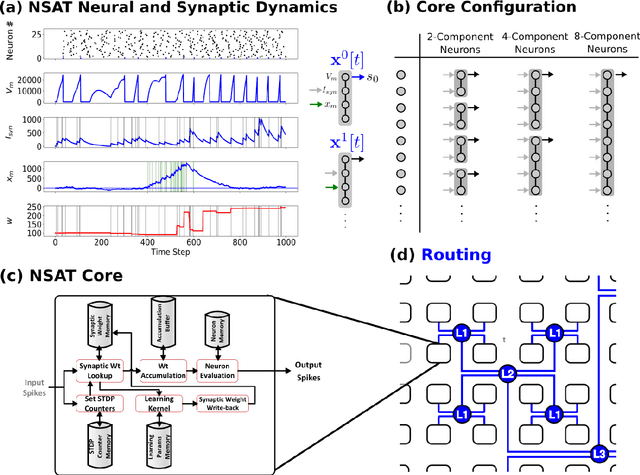
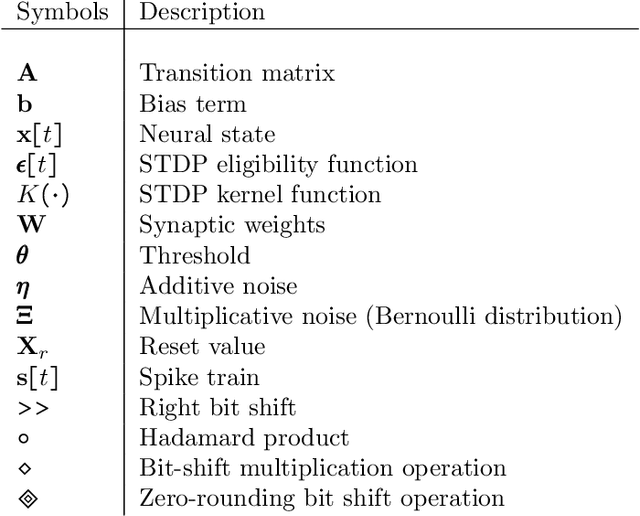
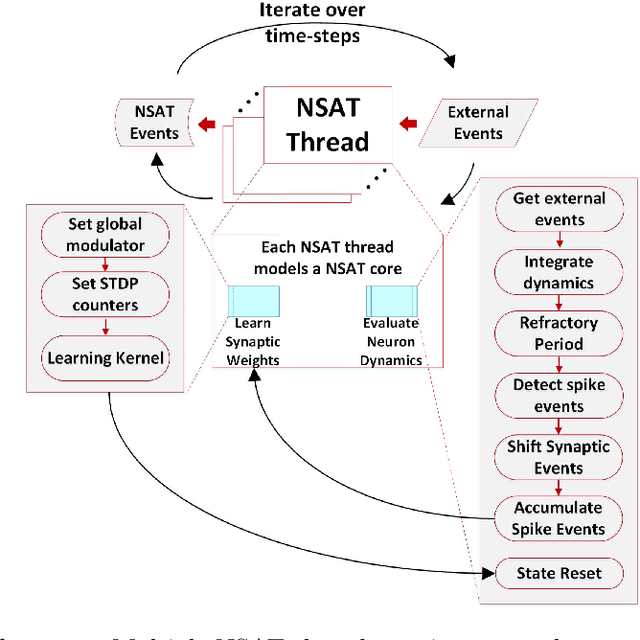
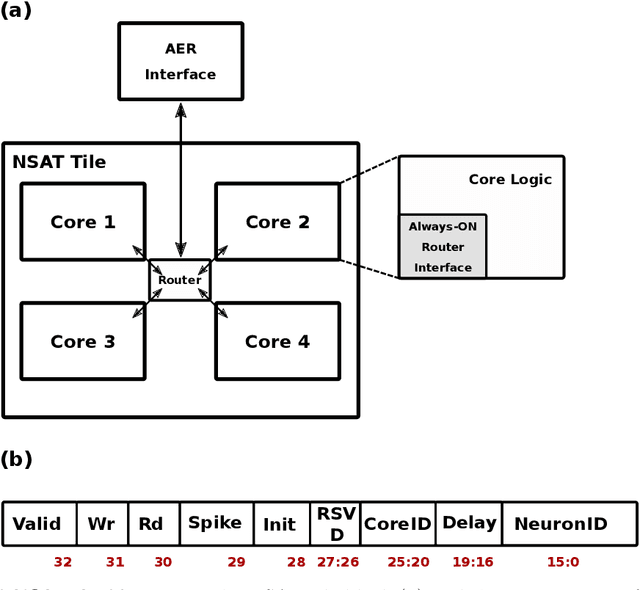
Abstract:Embedded, continual learning for autonomous and adaptive behavior is a key application of neuromorphic hardware. However, neuromorphic implementations of embedded learning at large scales that are both flexible and efficient have been hindered by a lack of a suitable algorithmic framework. As a result, the most neuromorphic hardware is trained off-line on large clusters of dedicated processors or GPUs and transferred post hoc to the device. We address this by introducing the neural and synaptic array transceiver (NSAT), a neuromorphic computational framework facilitating flexible and efficient embedded learning by matching algorithmic requirements and neural and synaptic dynamics. NSAT supports event-driven supervised, unsupervised and reinforcement learning algorithms including deep learning. We demonstrate the NSAT in a wide range of tasks, including the simulation of Mihalas-Niebur neuron, dynamic neural fields, event-driven random back-propagation for event-based deep learning, event-based contrastive divergence for unsupervised learning, and voltage-based learning rules for sequence learning. We anticipate that this contribution will establish the foundation for a new generation of devices enabling adaptive mobile systems, wearable devices, and robots with data-driven autonomy.
Neuromorphic Deep Learning Machines
Jan 21, 2017
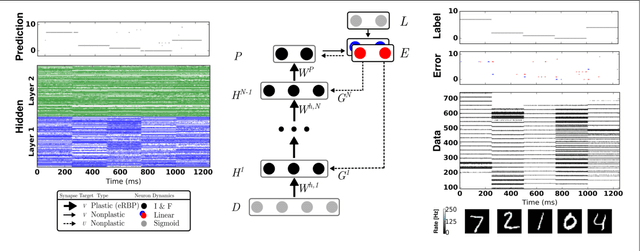
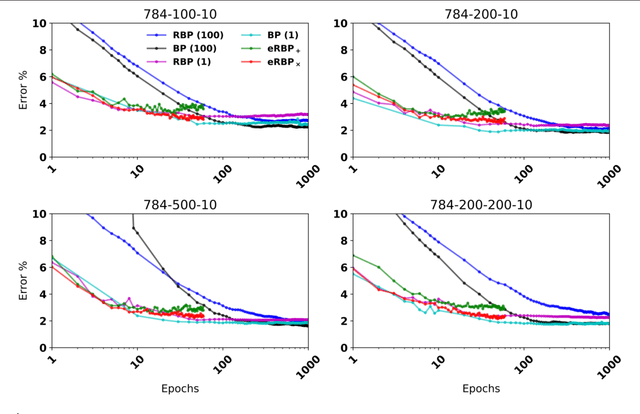
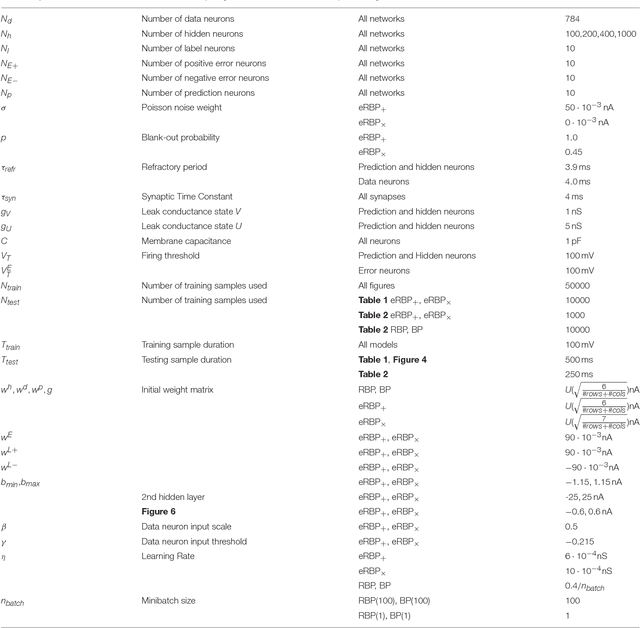
Abstract:An ongoing challenge in neuromorphic computing is to devise general and computationally efficient models of inference and learning which are compatible with the spatial and temporal constraints of the brain. One increasingly popular and successful approach is to take inspiration from inference and learning algorithms used in deep neural networks. However, the workhorse of deep learning, the gradient descent Back Propagation (BP) rule, often relies on the immediate availability of network-wide information stored with high-precision memory, and precise operations that are difficult to realize in neuromorphic hardware. Remarkably, recent work showed that exact backpropagated weights are not essential for learning deep representations. Random BP replaces feedback weights with random ones and encourages the network to adjust its feed-forward weights to learn pseudo-inverses of the (random) feedback weights. Building on these results, we demonstrate an event-driven random BP (eRBP) rule that uses an error-modulated synaptic plasticity for learning deep representations in neuromorphic computing hardware. The rule requires only one addition and two comparisons for each synaptic weight using a two-compartment leaky Integrate & Fire (I&F) neuron, making it very suitable for implementation in digital or mixed-signal neuromorphic hardware. Our results show that using eRBP, deep representations are rapidly learned, achieving nearly identical classification accuracies compared to artificial neural network simulations on GPUs, while being robust to neural and synaptic state quantizations during learning.
Membrane-Dependent Neuromorphic Learning Rule for Unsupervised Spike Pattern Detection
Jan 05, 2017
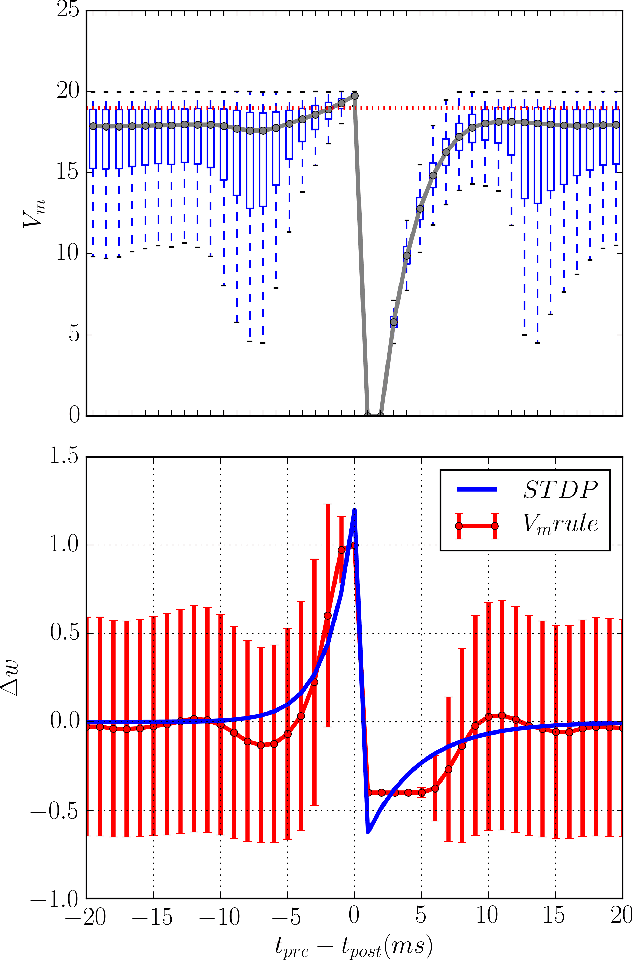
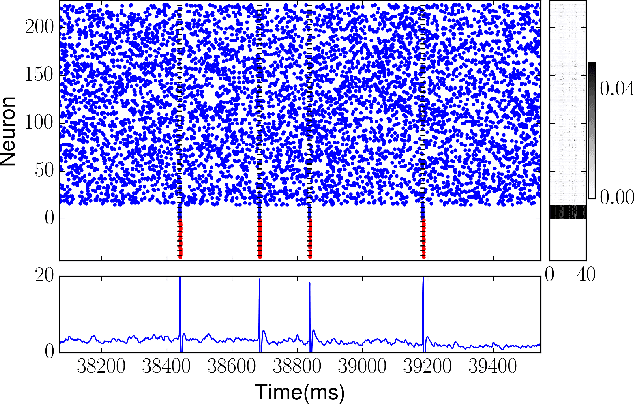
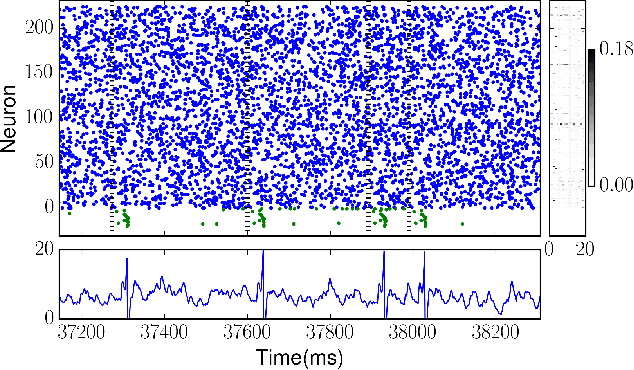
Abstract:Several learning rules for synaptic plasticity, that depend on either spike timing or internal state variables, have been proposed in the past imparting varying computational capabilities to Spiking Neural Networks. Due to design complications these learning rules are typically not implemented on neuromorphic devices leaving the devices to be only capable of inference. In this work we propose a unidirectional post-synaptic potential dependent learning rule that is only triggered by pre-synaptic spikes, and easy to implement on hardware. We demonstrate that such a learning rule is functionally capable of replicating computational capabilities of pairwise STDP. Further more, we demonstrate that this learning rule can be used to learn and classify spatio-temporal spike patterns in an unsupervised manner using individual neurons. We argue that this learning rule is computationally powerful and also ideal for hardware implementations due to its unidirectional memory access.
Forward Table-Based Presynaptic Event-Triggered Spike-Timing-Dependent Plasticity
Jul 24, 2016

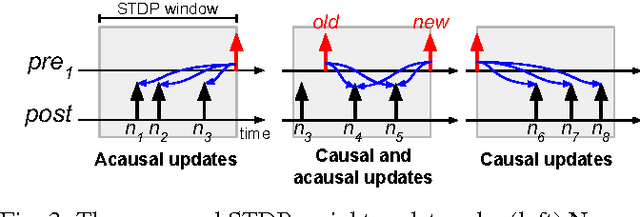
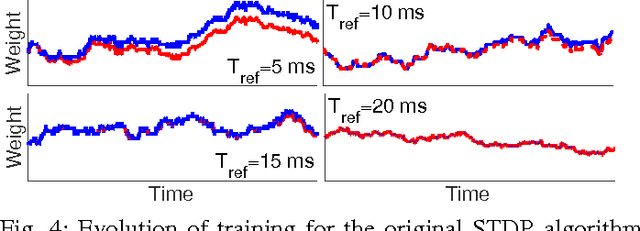
Abstract:Spike-timing-dependent plasticity (STDP) incurs both causal and acausal synaptic weight updates, for negative and positive time differences between pre-synaptic and post-synaptic spike events. For realizing such updates in neuromorphic hardware, current implementations either require forward and reverse lookup access to the synaptic connectivity table, or rely on memory-intensive architectures such as crossbar arrays. We present a novel method for realizing both causal and acausal weight updates using only forward lookup access of the synaptic connectivity table, permitting memory-efficient implementation. A simplified implementation in FPGA, using a single timer variable for each neuron, closely approximates exact STDP cumulative weight updates for neuron refractory periods greater than 10 ms, and reduces to exact STDP for refractory periods greater than the STDP time window. Compared to conventional crossbar implementation, the forward table-based implementation leads to substantial memory savings for sparsely connected networks supporting scalable neuromorphic systems with fully reconfigurable synaptic connectivity and plasticity.
 Add to Chrome
Add to Chrome Add to Firefox
Add to Firefox Add to Edge
Add to Edge